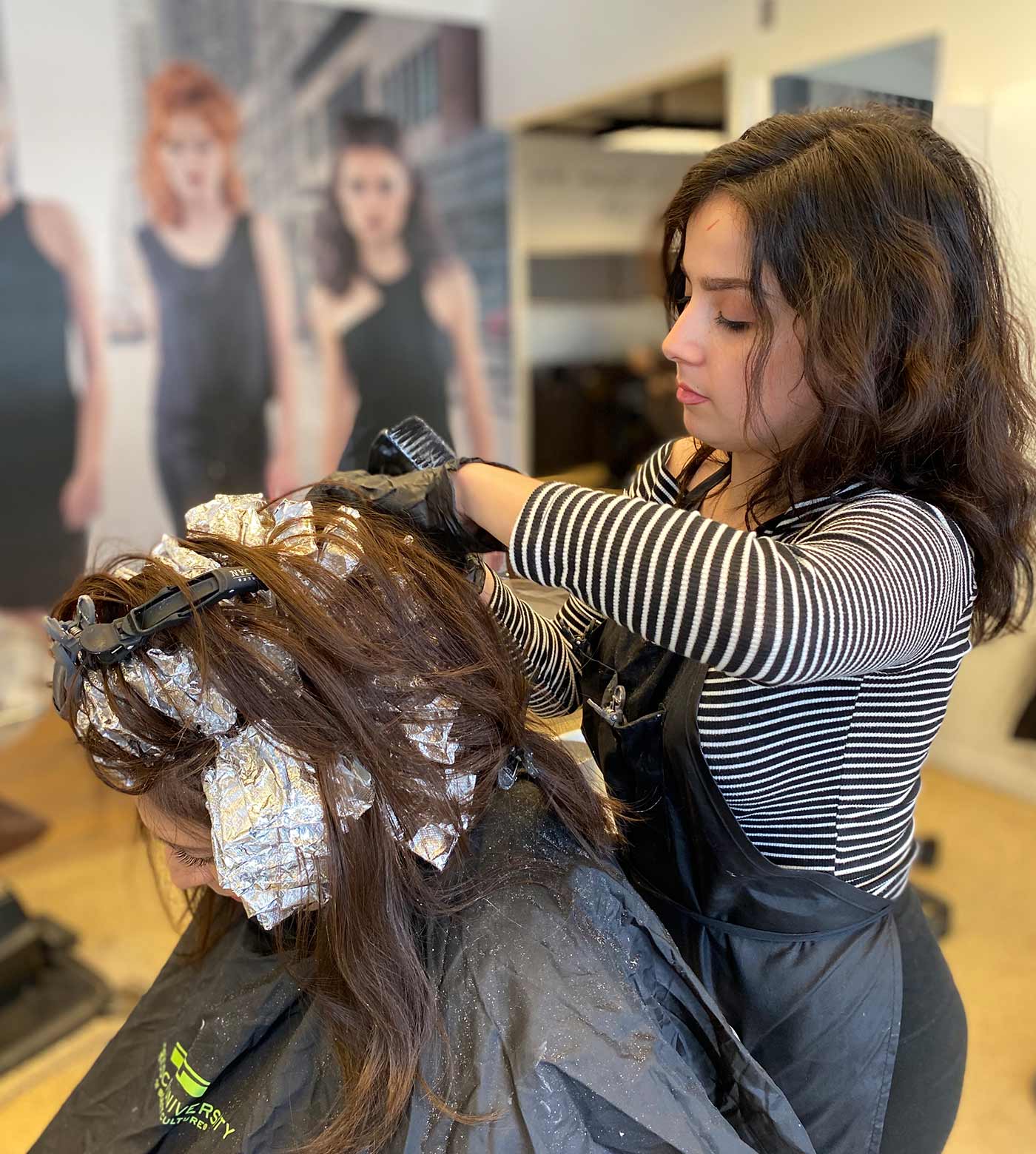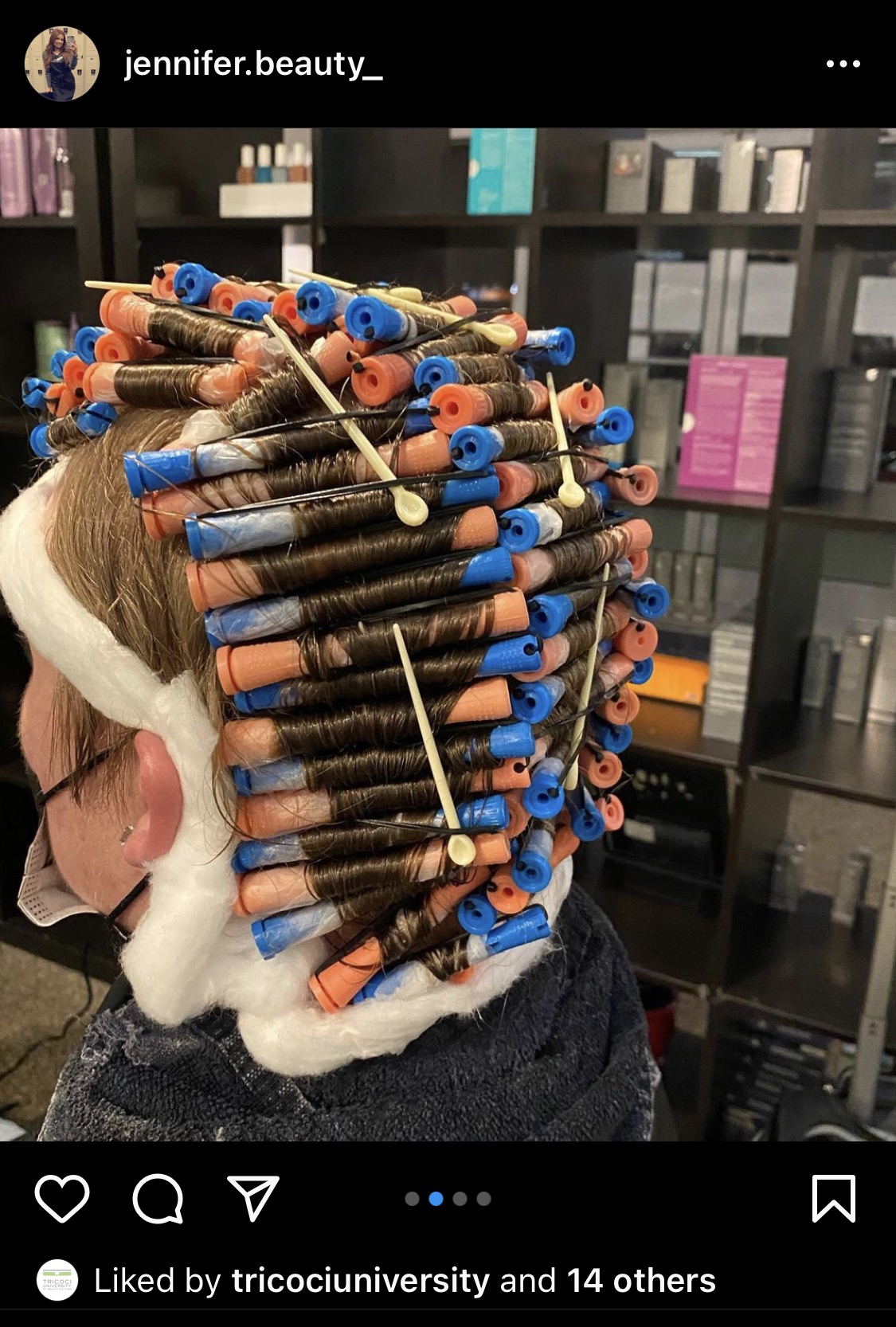Key Differences You’ll Learn Between Perms and Relaxers in Cosmetology School
An important part of being a hairdresser is understanding the needs and goals of your clients. This ensures client satisfaction and builds loyalty.
People want a hairdresser who can cut their hair into a desired style. In many cases, clients want someone who understands and can manage the texture of their hair as well. Because styling technology is constantly evolving, clients can receive treatments designed specifically for their hair texture. Today, a licensed hairstylist can use chemical treatments to make a client’s hair curly, stick-straight, or anything in between. Understanding what hair texture treatments are and how they work is crucial to meeting your client’s needs.
What Are Hair Texture Treatments?
The best way to learn about hair texture treatments is by attending a cosmetology school. There you will learn the key differences between the two main types of hair texture treatments: perms and relaxers.
What Is a Perm?
A perm is a chemical treatment that makes naturally straight hair curly. “Perm” comes from an abbreviation of the word “permanent.” However, the treatment doesn’t last forever. Perms generally last three to six months. It depends on the client’s hair type, as well as how well they care for their hair. On average, long-hair perms tend to last longer than short-hair perms.
A long hair perm will usually be a multi-hour process to obtain varying levels of curls. This is achieved by saturating the hair in a chemical liquid treatment and then wrapping it around rods and rollers. The hair then assumes a curl pattern based on the width and distribution of the rods and rollers. Shorter hair can be permed too, but must be long enough to wrap around the rollers. Perms generally use the chemical ammonium thioglycolate. Perms that are gentler on hair, known as acid-balanced perms, use glyceryl monothioglycolate.
How to Care for a Perm
The most important rule when caring for a perm is allowing the hair to set in the curl. For the first 48 hours after getting a perm, the client must leave their hair dry and untouched. This means no sweaty workouts and no showering without a cap. After that, avoid chlorine, as well as heat styling and products containing alcohol or silicone. Humidity or heavy sweating can also make even a professionally-done perm frizzy. It is best to avoid shampooing hair every day, as this will make the chemicals wash out faster.
What Is a Relaxer?
A relaxer is a permanent chemical treatment that makes curly hair straight. Hair is saturated in a creamy paste, which is left on until the hair straightens. Then the relaxer is washed out and the hair is washed again with neutralizing shampoo.
Most relaxers use sodium hydroxide. However, some use ammonium thioglycolate. This is the same chemical used in perms, but for a relaxing treatment, the rods and roller are omitted. Unlike perms, hair relaxing treatments are permanent. While hair will grow in with the client’s natural texture, only new growth areas will need to be treated if they wish to keep their hair straight.
How to Care for Relaxed Hair
As with perms, it is best to avoid chlorine, heat treatments, and shampooing every day. Clients should use special hair products designed for chemically straightened hair. To prevent hair breakage, it is best to comb the hair first with a wooden comb before brushing. Additionally, clients should refrain from any hair coloring treatments for six months.
Want to Learn More About These and Other Hair Treatments?
Everyone’s hair is different. Cosmology school will teach you the nuances of achieving different perm styles and how much relaxing cream to use on a client. You’ll also learn how to recommend the best products for aftercare. If you’re interested in learning more about a Cosmetology program, contact Tricoci University today to learn more!


